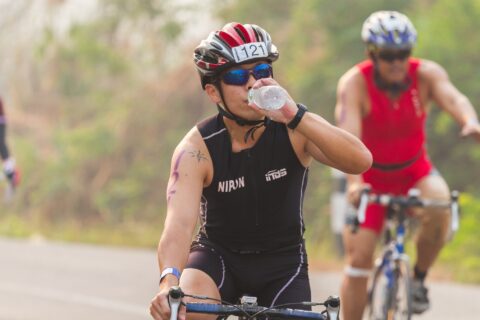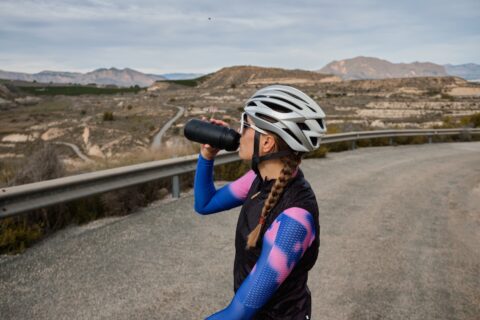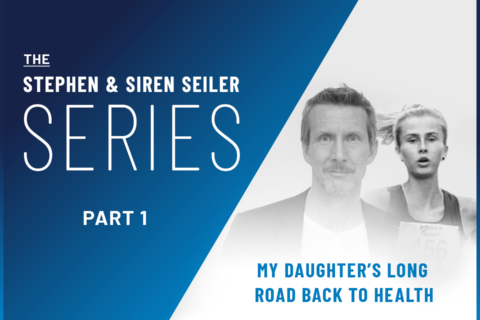Sports nutritionist Ryan Kohler shares three fast, simple ways to estimate portion sizes without counting calories or using mobile apps.
Video Transcript
Ryan Kohler 0:00
As athletes, we have a responsibility to understand the types and the amounts of fuel that we consume. This allows us to manage our intake, and it allows us to also match that intake with our expenditure. Today, we’ll show you how to estimate serving sizes without having to resort to those time consuming, and sometimes stressful food laws or other nutrition apps.
Ryan Kohler 0:31
Serving Size vs. Portion Size
So let’s start with the difference between a serving size and a portion size. A serving size is something you’ll find on the back of a nutrition facts label. This is typically based on what people would generally consume, this isn’t saying what you should consume, though, that is going to be your portion size. And that’s something that’s completely up to you. That will be vastly different depending on the athlete, but in general, it should be specific to your needs. When it comes to estimating serving sizes, we have a variety of tools at our disposal, we can go all the way from having a kitchen scale, where we put our food on it and weigh it out to using our different measuring cups, or we can even take our measuring spoons here. In reality, that’s not so much fun to do. And if we’re sitting around the dinner table, or we’re out with friends and family, they probably don’t enjoy seeing us do this either.
Best Portion Sizing Tools
All we need at minimum are two tools that with some training will never fail us. Those are the hands and the eyes. So what can the hands and eyes tell us? Well, we can take the hands and make a visual assessment of our portion size versus a serving size.
Your Fist
So you can use three main references to get the basics down, a fist, a palm, or a thumb. So let’s start with the fist. If we take our measuring cup here, we’re going to look at this fist as roughly one cup, and those are about the same.
Your Palm
Next, we’ll go and look at the hand. So this is going to be roughly a half cup or about the size of a baseball if I were to just let it sit in my palm here.
Your Thumb
So next we’ll go to the thumb. And if we take our full thumb and compare that against a tablespoon, we can see that’s about roughly a tablespoon. And if we go a little bit smaller and take our thumb tip that’s roughly a teaspoon. Once you’re familiar with how to make these estimates, you can start roughing out some actual sizes and amounts of fuel coming in. So if we take, for example, this baseball, or we take this little half cup serving, we can say okay, that’s going to give us about 15 or 20 grams of carbohydrate. So when we look at the plate now we say Oh, well, I have about a cup of rice, well, that’s probably more like 40 to 45 grams of carbohydrate. So this is where we start taking these visual cues and aligning them with actual amounts of fuel coming in if we do this with protein, and we say that we have a piece of chicken that’s roughly the size of our palm, that’s about three ounces, or about 20 or 21 grams of protein.
How to Use Your Portion Size Estimations
The big question, though, is how do I use this? Well, this video is not diving deep into the periodization of nutrition, talking about making race weight or other similar topics, we can still use these methods to understand what’s coming in, and how that relates to our output and needs. So you can immediately take this and start making well informed decisions. Here’s an example. Your dinner usually consists of a plate with some rice, protein and vegetables. By using the serving size estimation, we can see that we have roughly two fists of vegetables, two palms of protein, and one baseball of green. Let’s say that this is our usual afternoon post-workout meal. Now, what if we’re tapering for the big event, and we want to start adjusting our intake to suit those needs, those needs, of course being to increase our glycogen storage and our carbohydrate availability. Based on our usual observations, we can say that we probably need to increase carbohydrate intake and drop down fiber a little bit. Well, in that case, we can go with maybe one fist of vegetables, two pounds of protein and two baseballs worth of grain.
Now we can start to shape our plate based on the fields needed to power our exercise. For some athletes their needs would greatly exceed these numbers, while others may be pretty close to this example. In the end, remember that your servings should be specific to your needs as an athlete, not doing a whole lot of training at this time. Well, carbohydrate intake can probably be moderated. On the other hand, if you’re getting ready for that big event or recovering from some heavy strength training, make sure your carbohydrate and your protein needs are reflecting that you can use your hand as a great way to make changes from your usual intake and make your plate a more accurate visual representation of the types of fuel needed at any given time. Finally, don’t look at one approach or one plate arrangement as either good or bad. Rather, base it around your specific needs. Know that it will not always be perfect nutrition rarely is but if you can make your servings match your needs most of the time, you’ll set yourself up for success. So let’s hear from you. Hop over the forum at forums at fast talk labs.com And we’ll see you next time.



